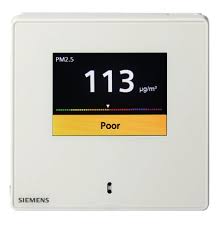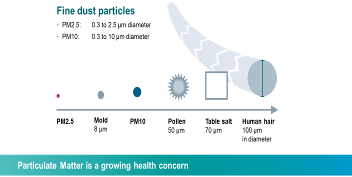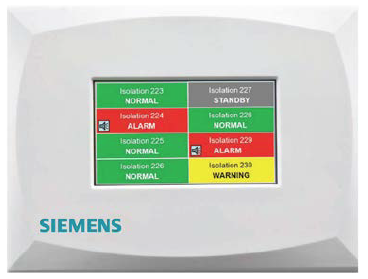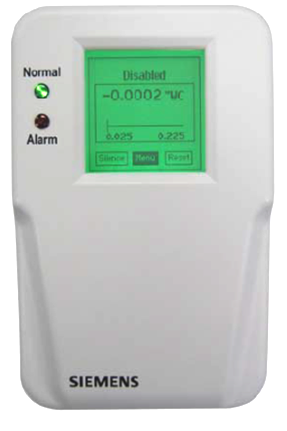
PCI now offers Needlepoint Bipolar Ionization systems by Global Plasma Solutions.
The air around us is filled with particles like dust, dander, pollen, smoke, odors and even pathogens including mold, viruses and bacteria. Our patented NPBI technology cleans the air by introducing ions into the space via the airflow in your ventilation system.
- Targets Particles - When these ions disperse throughout a space, such as an office or a schoolroom, they combine with particles suspended in the air. This creates a snowball effect in which particles of opposite polarities begin to cluster together, which makes them easier to capture in filtration systems.
- Tackles Odors - GPS’ NPBI technology breaks down chemical, pet, cooking and other odors into basic harmless compounds, leaving indoor air smelling fresh and substantially reducing odor-causing VOCs.
- Reduces Pathogens - During the NPBI process, contact with ions disrupts pathogens’ surface proteins, rendering them inactive and unable to replicate.
- Saves Energy - By keeping indoor air cleaner, NPBI reduces the amount of air required from outside to keep things fresh—saving you initial ventilation equipment costs and up to 30% on energy consumption.
Brochure - Better Air Through Space
GPS-FC24-AC Product Data Sheet
GPS-FC48-AC Product Data Sheet

For more information give us a call (803) 239-2492 or click the button below
Health Effects of Particulate Matter
Small particles pose the greatest problems, because they can get deep into your lungs, and possibly your bloodstream. Numerous scientific studies have linked particle pollution exposure to a variety of problems, including:
- Premature death in people with heart or lung disease
- Non-fatal heart attacks
- Irregular heartbeat
- Aggravated asthma
- Decreased lung function
- Increased respiratory symptoms, such as irritation of the airways, coughing or difficulty breathing.
Brochure


ASHRAE Position on Infectious Aerosols
The following is taken from the Abstract of the document referenced.
The pathogens that cause infectious diseases are spread from a primary host to secondary
hosts via several different routes. Some diseases are known to spread by infectious aerosols;
for other diseases, the route of transmission is uncertain. The risk of pathogen spread, and
therefore the number of people exposed, can be affected both positively and negatively by the
airflow patterns in a space and by heating, ventilating, and air-conditioning (HVAC) and local
exhaust ventilation (LEV) systems. ASHRAE is the global leader and foremost source of technical
and educational information on the design, installation, operation, and maintenance of
these systems. Although the principles discussed in this position document apply primarily to
buildings, they may also be applicable to other occupancies, such as planes, trains, and automobiles.
ASHRAE will continue to support research that advances the knowledge base of indoor airmanagement strategies
aimed to reduce occupant exposure to infectious aerosols. Chief
among these ventilation-related strategies are dilution, airflow patterns, pressurization,
temperature and humidity distribution and control, filtration, and other strategies such as ultraviolet
germicidal irradiation (UVGI). While the exact level of ventilation effectiveness varies with
local conditions and the pathogens involved, ASHRAE believes that these techniques, when
properly applied, can reduce the risk of transmission of infectious diseases through aerosols.
Document

Isolation and Critical Room Pressure Monitors
MRMS Multi-Room Station

Designed for installation in a central location, such as a nurses’ station or main control room. A built-in audible and visual alarm and high definition color display alerts users to room status and room condition, while allowing for easy alert of a change in room condition.
Features
- Remotely Monitor up to 8 Rooms
- Auto-Discover
- Built-in Audible and Visual Alarm
- Flush-Mount Design: Low profile, easy-care wipe down
- Snap-in cover plate- no visible fasteners
- BACnet® MS/TP Protocol
SCRM Room Condition Monitor

Uses highly accurate capacitance sensing technology to measure and display true low pressure differential. This flush mounted monitor is typically located outside of an Isolation Room.
Features
- High resolution color touch-screen display
- Immediate feedback on room status
- Intuitive graphic interface
- Display both pressure and room condition
- On-board and remote sensing capability
- Flush-mount design: Low profile, easy-care wipe down
- Snap-in cover plate—no visible fasteners
RPM Room Pressure Monitor

Designed for critical low differential pressure applications that require stringent pressure monitoring and alarming. The unit can be configured to monitor positive or negative pressure in protected environments and hospital isolation rooms per CDC guidelines.
Features
- Touchscreen display
- Password security enabled
- Local audible alarm
- Visual red and green room status displays
- Positive and negative pressure monitoring
- CE and RoHS compliant
- Easy to install, set-up and calibrate
PCI newsletters
of Interest
use of these external links constitutes acceptance of our privacy policy and terms of use and your agreement to be bound by them.